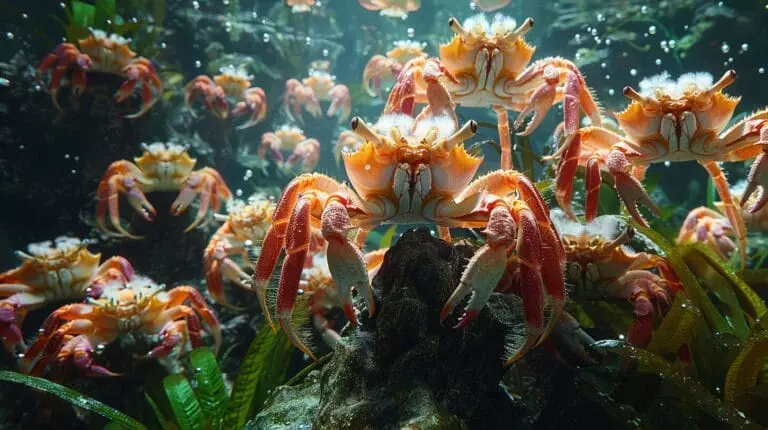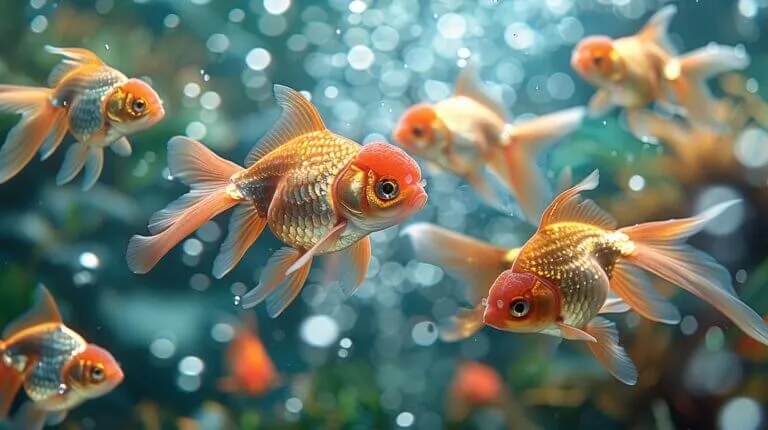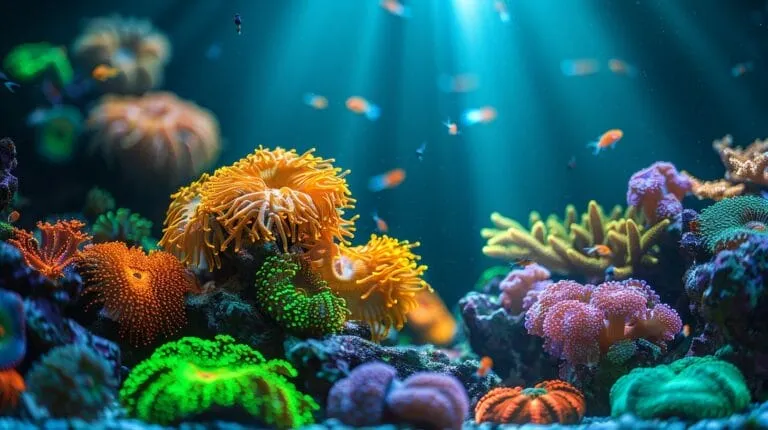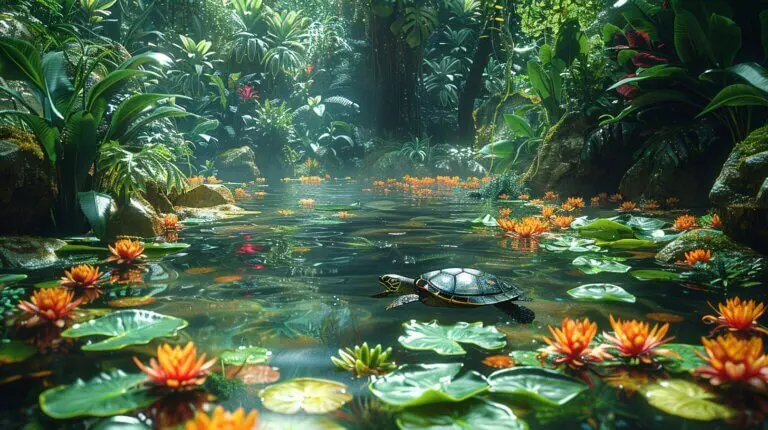When it comes to creating a vibrant underwater world in your home, the best internal filter for aquarium can make all the difference! Imagine looking into your tank and seeing crystal-clear water, where your fish swim happily and your plants thrive. Choosing the right filter not only keeps your aquarium clean but also ensures a healthy environment for your aquatic friends. If you overlook this crucial piece of equipment, you could end up with murky water, unpleasant odors, and stressed-out fish.
In this guide, we’ll dive deep into the types of filters available and how they work, helping you understand why internal filters are often the top choice for many hobbyists. We’ll also explore our top picks for the best internal filters on the market and share expert tips on maintaining them for optimal performance. Get ready to transform your aquarium into a stunning aquatic paradise!
Quick Recommendations
- Fluval: Advanced filtration system ensuring clear and healthy aquatic environments.
- NICREW: Customizable water flow rates for optimal aquarium health.
- Tetra: Superior biological filtration for naturally balanced aquariums.
- MarineLand: High-performance canister filter for pristine aquarium conditions.
- No.17: Versatile internal filtering solution tailored to your aquarium’s needs.
Understanding Aquarium Filters: Types and Functions

Internal filters keep aquarium water clean and healthy through a combination of filtration methods. These compact devices fit inside the tank and process water continuously to maintain optimal conditions for fish and plants.
What are Internal Filters and How Do They Work?
Internal filters draw tank water through different filter media to remove waste and harmful substances. The filtration process happens in three key ways:
- Biological Filtration: Special bacteria grow on filter surfaces to break down toxic ammonia from fish waste into safer compounds called nitrates
- Mechanical Filtration: Sponges and mesh materials trap solid particles like uneaten food and waste
- Chemical Filtration: Activated carbon absorbs dissolved chemicals and impurities from the water
Types of Aquarium Filters: Internal vs External
Internal filters mount inside the aquarium using suction cups. These filters:
- Take up some tank space but require no external equipment
- Install easily with minimal setup
- Work well in tanks under 30 gallons
External filters sit outside the tank and pump water through for cleaning. These filters:
- Save valuable space inside the aquarium
- Provide more powerful filtration
- Handle larger water volumes in tanks over 30 gallons
Benefits of Internal Filters
Internal filters offer several key advantages:
- Space-Efficient: Compact design fits neatly inside smaller tanks
- Easy Setup: Simple installation with no complex plumbing needed
- Budget-Friendly: Lower cost compared to external filtration systems
- Low Maintenance: Quick access for routine cleaning and media changes
- Reliable Operation: Fewer parts means less chance of problems
The right internal filter keeps tank water crystal clear while creating healthy water movement that fish enjoy. Regular maintenance ensures optimal performance for a thriving aquarium environment.
[Sources: Wikipedia – Aquarium Filtration, Fishkeeping Guide]
5 Best Internal Filters for Your Aquarium

Internal aquarium filters maintain crystal-clear water and healthy aquatic environments. Here’s an expert analysis of the top internal filters, complete with detailed specifications and real-world performance data.
Comparison Table
| Image | Product Name | Key Features | Best For | CHECK PRICE |
|---|---|---|---|---|
 | Fluval | • Multi-stage filtration process<br>• Energy-efficient performance<br>• Quiet operation | Home aquariums seeking superior water clarity | CHECK PRICE |
 | NICREW | • Adjustable water flow control<br>• Easy installation and maintenance<br>• Quiet and energy-efficient | DIY aquarium enthusiasts needing flexible filtration | CHECK PRICE |
 | Tetra | • BioScrubber technology for effective waste removal<br>• Easy-to-use design<br>• Energy-efficient operation | Freshwater and marine tanks requiring robust biological filtration | CHECK PRICE |
 | MarineLand | • Multi-stage filtration system<br>• Adjustable flow rate<br>• Easy setup and maintenance | Large aquariums needing powerful and efficient filtration | CHECK PRICE |
 | No.17 | • Adjustable internal placement for optimal flow<br>• Quiet and compact design<br>• Easy to assemble and clean | Small to medium aquariums requiring adaptable filtration | CHECK PRICE |
1. Fluval U3 Underwater Filter
The Fluval U3 stands out as a powerhouse for medium to large aquariums. This filter handles tanks up to 75 gallons with remarkable efficiency.
Key Features:
- 3-stage filtration system
- Adjustable flow rate (240 GPH maximum)
- Multiple mounting options
- Integrated spray bar for enhanced oxygenation
Best For: Larger aquariums requiring powerful filtration
2. NICREW Submersible Filter
Perfect for both freshwater and saltwater setups, the NICREW delivers consistent performance in tanks up to 30 gallons.
Key Features:
- Ultra-quiet operation (25dB)
- Dual filtration chambers
- 160 GPH flow rate
- Easy-access maintenance design
Best For: Mid-sized community tanks and peaceful aquariums
3. Tetra Whisper Internal Filter
This compact filter excels in nano tanks and small setups up to 10 gallons, operating almost silently.
Key Features:
- Bio-Bag filtration system
- Small footprint design
- 85 GPH flow rate
- Simple one-piece construction
Best For: Desktop aquariums and breeding tanks
4. MarineLand Polishing Filter
The MarineLand filter combines powerful mechanical and chemical filtration for crystal-clear water in tanks up to 30 gallons.
Key Features:
- Ceramic bio-rings included
- 200 GPH flow rate
- 3-layer filtration media
- Specialized polishing chamber
Best For: Show tanks requiring pristine water clarity
5. No.17 Submersible Filter
An efficient choice for small tanks up to 20 gallons, offering excellent value and reliable performance.
Key Features:
- 132 GPH adjustable flow
- Compact vertical design
- Dual-layer filtration
- Energy-efficient motor
Best For: Budget-conscious aquarists with smaller tanks
Comparing Internal Filters with Canister Filters

The right aquarium filter maintains crystal-clear water and healthy fish. Understanding the key differences between internal and canister filters helps make the best choice for any tank setup.
Internal Filters vs. Canister Filters: Pros and Cons
Internal Filters
Benefits:
- Space-saving design fits inside the tank
- Budget-friendly pricing for most models
- Quiet operation for peaceful environments
- Simple installation with suction cups
- Perfect for tanks under 20 gallons
Limitations:
- Limited filtration power
- Needs weekly cleaning
- Takes up tank space
- Best for light fish loads only
Canister Filters
Benefits:
- Powerful filtration for larger tanks
- Multiple media options for customized filtering
- Handles heavy fish loads effectively
- Maintains cleaner water longer
- Ideal for tanks over 30 gallons
Limitations:
- Higher purchase cost
- Requires space outside the tank
- More complex setup process
- Regular maintenance needed
Choosing the Right Filter for Your Tank
Tank size serves as the primary factor in filter selection:
- 5-20 gallons: Internal filters provide sufficient filtration
- 20-30 gallons: Either type works, depending on fish load
- 30+ gallons: Canister filters offer better performance
Consider these additional factors:
- Fish population and waste production
- Available maintenance time
- Space around the aquarium
- Budget constraints
Internal filters excel in small tanks with fewer fish, while canister filters maintain pristine conditions in larger aquariums. The best choice balances filtration needs with practical considerations.
Maintaining Your Internal Filter for Optimal Performance

Regular filter maintenance creates a thriving aquatic environment. Here’s a complete guide to keeping internal aquarium filters working at peak efficiency.
Routine Maintenance Practices
Internal filters require consistent care to function properly. Follow these essential maintenance steps:
- Clean the filter media every 2-3 weeks: Rinse media gently in aquarium water to preserve beneficial bacteria while removing debris that can clog the system
- Replace filter cartridges on schedule: Most cartridges need replacement every 2-3 months – check manufacturer guidelines for specific timing
- Perform weekly water changes: Change 10-20% of tank water to maintain optimal conditions and reduce strain on the filtration system
Common Issues and Solutions
Watch for these typical filter problems and their straightforward fixes:
- Weak water flow: Clean the filter media, check for clogs in the intake, and ensure the impeller moves freely
- Strange noises: Remove debris from the impeller housing and verify all parts are properly seated
- Cloudy water: Test water parameters, clean filter media, and consider increasing maintenance frequency
When to Replace Your Filter
Look for these clear signs that indicate the need for a new filter:
- Persistent unpleasant odors that remain after thorough cleaning
- Physical damage to the housing, impeller, or other vital components
- Consistently poor water quality despite proper maintenance
- Age beyond manufacturer recommendations (typically 2-3 years with regular use)
Expert Recommendations for Internal Aquarium Filters

Matching Filters with Fish and Plant Requirements
The right internal filter creates a balanced environment for aquatic life. Here’s how to select the perfect filter based on tank inhabitants:
Fish Requirements:
- Calm-water species (bettas, gouramis) need gentle filtration with adjustable flow
- Active swimmers (tetras, barbs) thrive with stronger water movement
- Bottom dwellers benefit from filters that don’t disturb substrate
Plant Considerations:
- Delicate plants require gentle water circulation
- Stem plants need moderate flow for nutrient distribution
- Floating plants perform best with minimal surface agitation
- Root-feeding plants benefit from deeper water movement
Filter Selection Factors:
- Tank size determines filter capacity (1x-4x water volume per hour)
- Filter media options support specific biological needs
- Adjustable flow rates accommodate different species
- Multiple filtration stages ensure complete water processing
Expert Filter Selection Guidelines
Leading aquatic specialists recommend these key factors for optimal filtration:
Essential Features:
- Mechanical and biological filtration capabilities
- Easy access for regular maintenance
- Reliable brand reputation (Fluval, Tetra, MarineLand)
- Appropriate size for tank volume
- Adjustable flow control
Professional Tips:
- Install filters away from delicate plants
- Position outlets to create gentle circular flow
- Maintain consistent biological filtration
- Clean filter media in tank water
- Replace mechanical filtration monthly
Ecosystem Management:
- Monitor ammonia and nitrite levels weekly
- Observe fish behavior near filter output
- Check plant movement for proper flow
- Maintain beneficial bacteria colonies
- Adjust filtration based on tank response
Conclusion
Choosing the right internal filter for your aquarium is essential for keeping your fish and plants happy and healthy! We learned that internal filters are great for smaller tanks and provide excellent mechanical and biological filtration. Plus, they’re usually easy to maintain and install! Each filter we discussed, like the Fluval and NICREW, has unique features to meet the varied needs of your tank.
So, whether you’re a beginner or an experienced aquarist, finding the perfect filter can help you achieve crystal-clear water and a thriving aquatic environment. Keep exploring and learning about your aquarium’s needs, because the more you know, the happier your underwater friends will be! Happy fishkeeping!
FAQs
1. What makes a great internal aquarium filter?
Internal filters need three key features: effective mechanical filtration for debris removal, biological filtration to support beneficial bacteria, and appropriate flow rate for tank size. The best models, like Fluval and NICREW, combine these features with reliable performance and easy maintenance.
2. How do internal aquarium filters clean water?
Internal filters use a three-stage process:
- Mechanical filtration traps solid waste and debris
- Chemical filtration removes dissolved impurities
- Biological filtration converts harmful ammonia into safer compounds
3. What separates internal from external filters?
Location marks the main difference – internal filters operate inside the tank while external filters work outside. Internal filters excel in:
- Space efficiency
- Simple installation
- Direct water circulation
- Lower maintenance needs
4. When should filter maintenance occur?
Monthly cleaning keeps internal filters running optimally. Key maintenance steps include:
- Rinsing filter media in tank water
- Checking for debris buildup
- Inspecting moving parts
- Testing water flow
5. Which filter size fits different tanks?
Match filter capacity to tank volume:
- 1-10 gallons: Small internal filter
- 10-30 gallons: Medium internal filter
- 30+ gallons: Large internal filter or consider external options
Last update on 2025-04-17 / Affiliate links / Images from Amazon Product Advertising API












